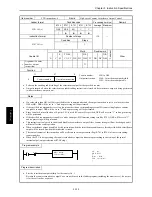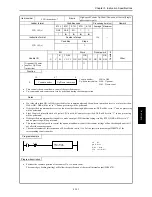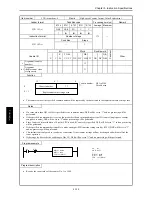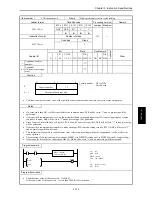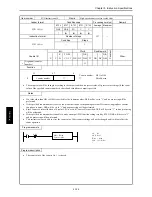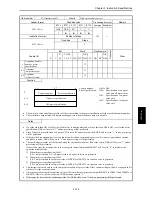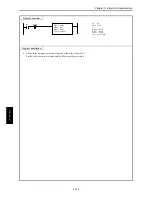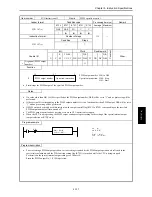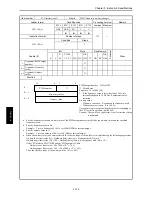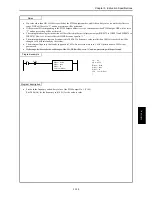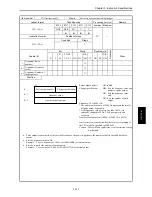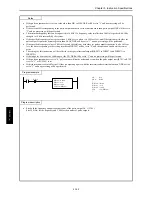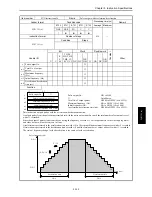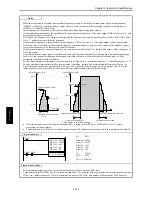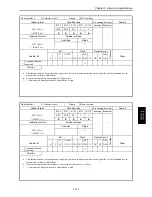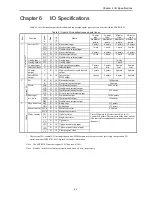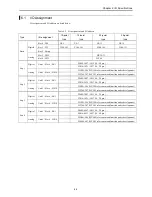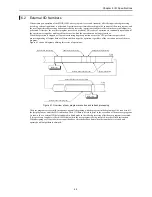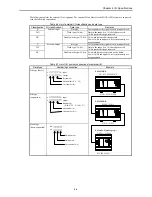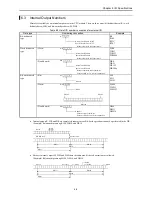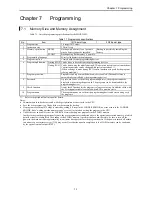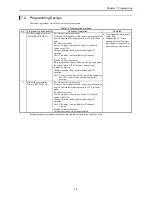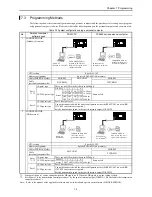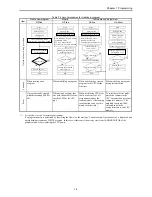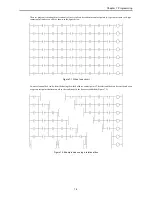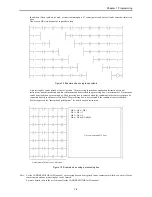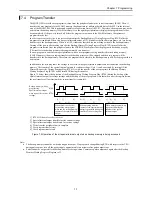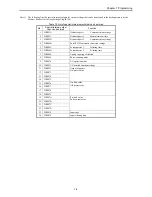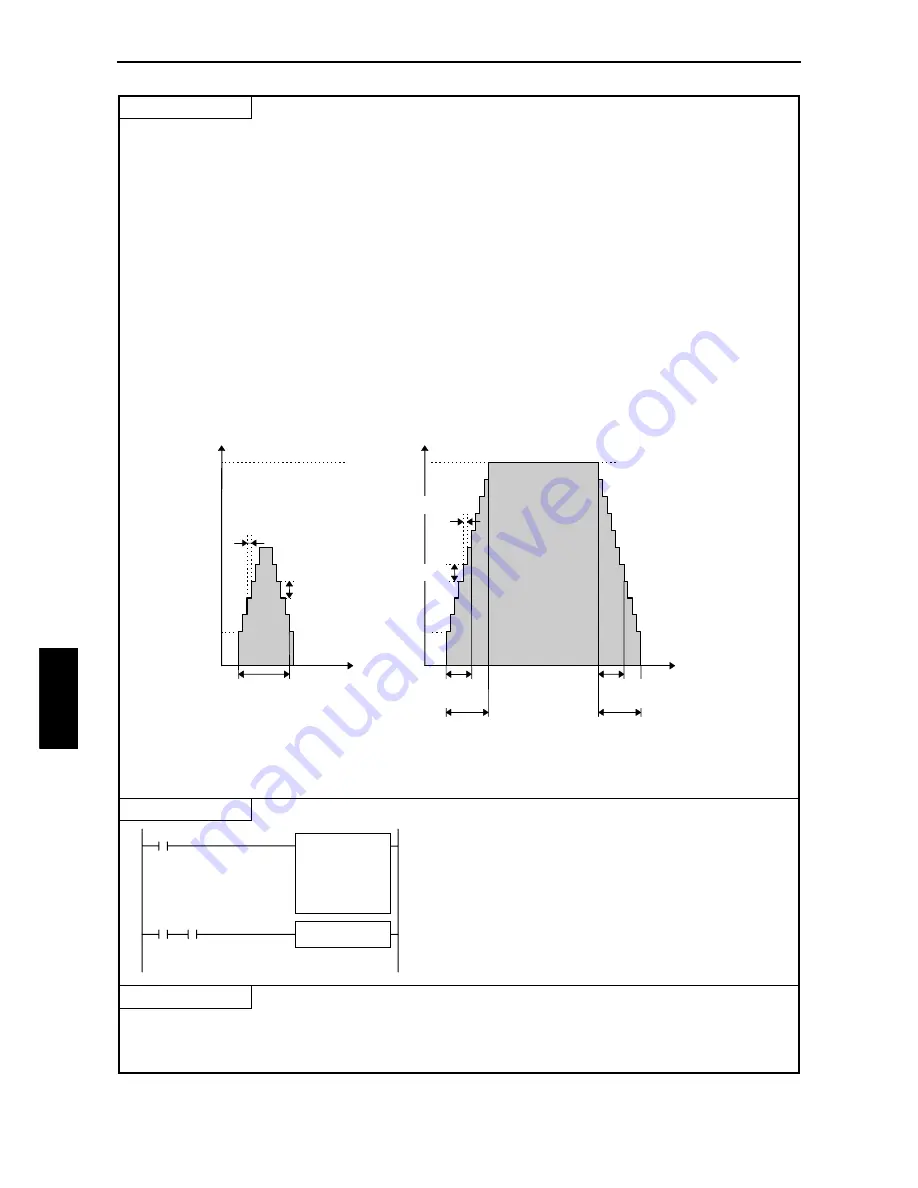
Chapter 5 Instruction Specifications
5-144
Notes
When this instruction is executed, the maximum frequency is stored in the special internal output’s pulse output frequency
(WRF072 to WFR075), and the number of output pulses is stored in the special internal output’s number of output pulses
(WRF07A to WRF07D) respectively.
This instruction will not be executed if the specified pulse output is generating pulse output.
If the output that corresponds to the specified pulse output number has not been set for pulse output, DER will be set to “1” and
pulse output will not be generated.
If the total of the frequency set with this instruction and the frequency set for another pulse output exceeds 5 kHz, DER will be
set to “1” and pulse output will not be generated.
If the maximum frequency is larger than the initial frequency, DER will be set to “1” and pulse output will not be generated.
If the same value is specified for the maximum frequency and initial frequency, pulses will be output for the number of pulses
set with the maximum cycle without acceleration/deceleration.
If the maximum frequency and initial frequency are set to a value smaller than 10 Hz, the specified values will be changed to 10
Hz by the system.
If the total number of output pulses is small, deceleration will be performed without accelerating up to the maximum frequency.
In this case, the specified acceleration/deceleration time will not be used as the acceleration/deceleration time; it will be
accelerated (or decelerated) for each pulse.
For the acceleration/deceleration time, set a value equal to or larger than (1 / maximum fre 1 / initial frequency) x 5. If
an acceleration/deceleration time smaller than this value is specified, the specified acceleration/deceleration will not be set.
Acceleration and deceleration are performed in 10 steps, and at least one or more pulses are always output. Thus, if a small
initial frequency value is specified, an error in the acceleration/deceleration time will become large.
Pulse output at abnormal setting
•
If this instruction is executed while the backup memory is being written (R7EF=1), DER will be set to “1” and no
processing will be performed.
•
The backup memory will not be written during pulse output. Be extremely careful when you change a program during RUN.
Program example
Program description
Sets the required parameters in the special internal outputs at the first scan after RUN start.
At the leading edge of X00001, pulses are output starting from Y101 using the following settings: acceleration/deceleration time
of 300 (Hz), initial frequency of 500 (Hz), maximum frequency of 1000 (Hz), and number of output pulses of 4,096 pulses.
R7E3
WR0100 = H0200
WR0101 = H1000
WR0102 = 1000
WR0103 = 500
WR0104 = 300
FUN 151(WR0100)
X00001 DIF0
LD
R7E3
[
WR0100 = H0200
WR0101 = H1000
WR0102 = 1000
WR0103 = 500
WR0104 = 300
]
LD
X00001
AND
DIF0
[
FUN 151 (WR0100)
]
Time (sec)
Pulse frequency (Hz)
F:S+2
0
0
Actual acceleration time
Pulse frequency (Hz)
F:S+2
Equivalent to one pulse
Equivalent to one pulse
(F-F
0
) / 10
Specified deceleration time set
T:S+4
Specified acceleration time
T:S+4
Specified acceleration time
T:S+4
Actual deceleration time
F
0
:S+3
F
0
:S+3
(F-F
0
) / 10
FUN 151 (s
)
Summary of Contents for HIDIC MICRO-EH
Page 1: ...HITACHI PROGRAMMABLE CONTROLLER APPLICATION MANUAL NJI 350B X ...
Page 12: ...MEMO ...
Page 14: ...Chapter 1 Features 1 2 MEMO ...
Page 50: ...Chapter 4 Product lineup and wiring 4 18 MEMO ...
Page 196: ...Chapter 5 Instruction Specifications 5 146 ...
Page 263: ...Chapter 11 Communication Specifications 11 10 MEMO ...

